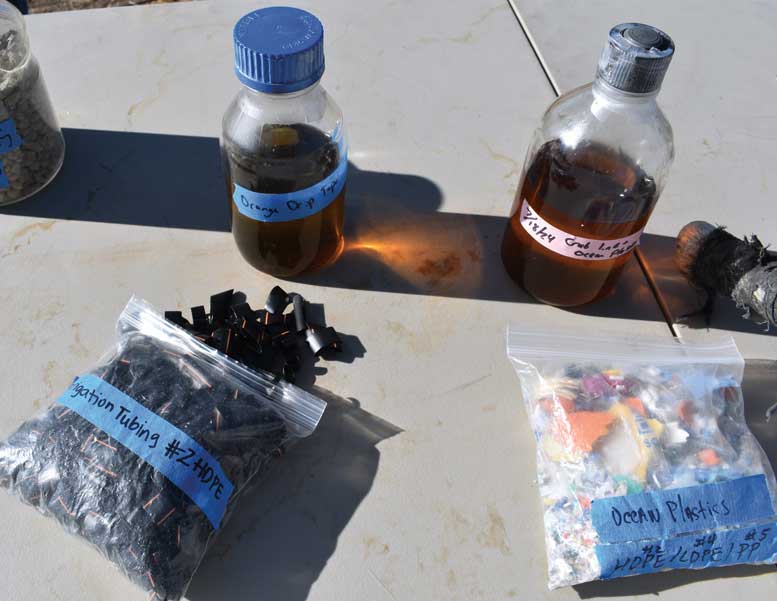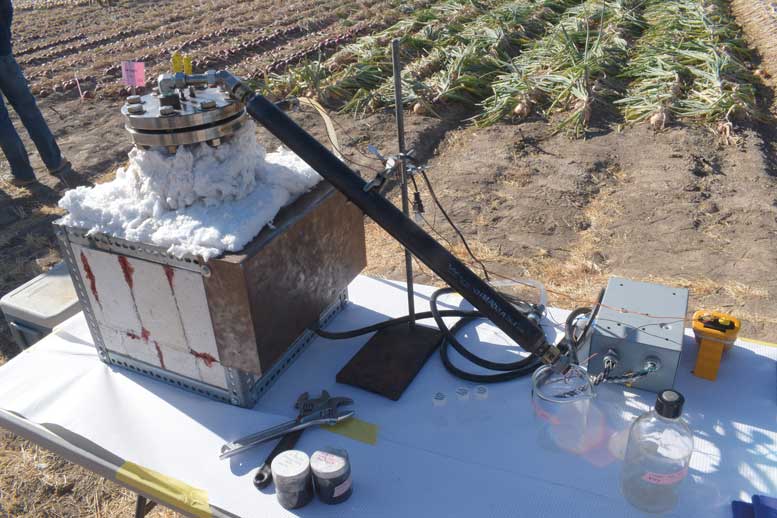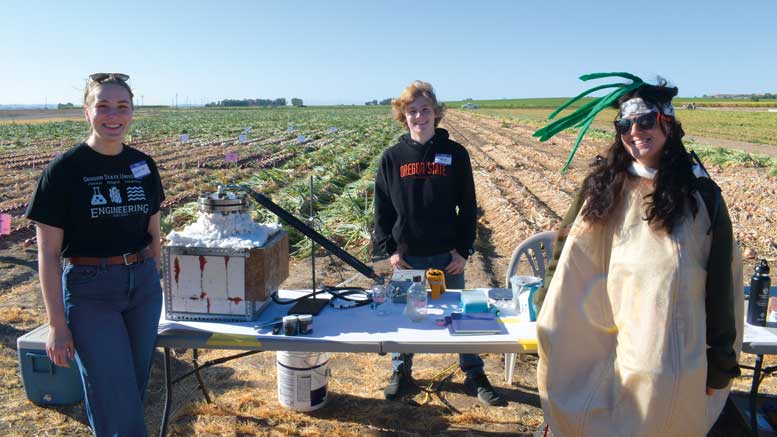|
Click to listen to this article
|
Story and photos by Dave Alexander, Publisher
sustainability / sə- stā-nə- bi-lə-tē / n : the quality of not being harmful to the environment or depleting natural resources, and thereby supporting long-term ecological balance
Sustainability is an important buzzword on farms nowadays, but farmers have been practicing it long before it had a Merriam-Webster definition. But now that it is defined as a goal for farmers, some processors are requiring sustainability reports and expect growers to have a plan in place.
Part of a sustainable plan involves recycling, and if you’re using plastic drip tape, dumping it into a hole or a landfill is not considered sustainable or even responsible. Recycling plastic makes sense, as it can be made into a variety of things, including building materials, fabrics, packaging, toilet paper and even red diesel suitable for tractors.

If you caught the article titled “Is a Backyard ‘Still’ in Your Future?” from the March-April 2024 issue of Onion World, you’ll know that Oregon State University (OSU) has an ongoing project to convert plastic waste (like drip tape) into red diesel fuel. The conversion is done using pyrolysis, a process that heats plastics to high temperatures without oxygen and converts the plastic into usable diesel. OSU describes it cleverly as “futile to utile.”
At the OSU Malheur Experiment Station Onion Variety Day in late August, attendees got a chance to see pyrolysis in action, using a working pyrolysis reactor built by OSU students. The reactor is not overly complex or complicated. Running on 120V AC, the heart of the machine is a high-temperature kiln that melts plastic.

The Ontario, Oregon, experiment station does not have a permanent reactor, or “still” as we like to call it for the shock value, but station director Stuart Reitz and OSU faculty member Marina Denny said there are several growers in the Treasure Valley that are willing to step up and have demo units on their property.

Many Questions
But the first step to enhanced sustainability, Rietz said, is to get answers to plenty of questions about the fledgling technology. Popping them off one by one, Reitz created a long list. What kind of regulatory hurdles will need to be cleared? Will the cost of building and running a reactor on your farm pencil out, considering the diesel you get back? If a third party built a larger facility, would the shipping cost to get drip tape to the recycler and the electrical power to run the reactor make it profitable? Would a larger, community reactor charge growers to process their drip tape, or would the return of one kg of plastic for one liter of fuel be enough of a return? Would there be funds available to build such a facility? It’s too soon to answer any of these riddles.

To answer these questions and more, OSU is looking for help and input from growers. OSU has developed an online survey that will determine what type of plastic waste currently exists on farms, what growers do with it now and how much they spend to dispose of it. The survey seeks answers to these questions to determine the real-world viability of pyrolysis.
Even if the OSU survey finds that a backyard reactor doesn’t pencil out for Treasure Valley growers, a larger reactor built for the community could make sense. Reitz said the same tech on display at the field day could be “leveled up” into a larger machine.

Not all plastic can be pyrolyzed into diesel fuel, but there are some consumer packaging products that can. In addition to drip tape, things like milk jugs, squeezable bottles, 6-pack rings and some plastic bags will produce fuel. Perhaps a local effort to recycle these types of items would help with the feasibility of a large reactor and the goal of greater sustainability.

To take the survey and help OSU determine the next step, use the QR code on this page or go to oregonstate.qualtrics.com/jfe/form/SV_4T2Gjr8cpO2wOXQ.

